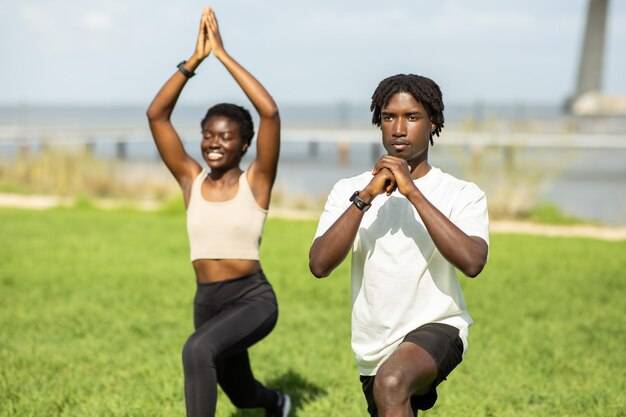Exercise is one of the most powerful tools at our disposal for transforming our lives. Whether you're looking to enhance your physical health, boost your mental well-being, or increase your energy levels, regular exercise is one of the most effective and accessible means of achieving your goals. Not only does exercise have profound benefits on your body, but it also has an equally significant impact on your mind.
In today's fast-paced world, we often focus on work, technology, and other responsibilities, leading to a sedentary lifestyle. However, when we begin to incorporate regular physical activity into our daily routine, the benefits can be life-changing. Exercise helps improve cardiovascular health, boost brain function, support mental health, increase longevity, and reduce the risk of chronic diseases.
In this blog post, we will explore the transformative power of exercise, looking at how it changes your body and mind, supported by the latest scientific research. We’ll dive deep into how different types of exercise can affect various systems of your body and offer practical advice on incorporating exercise into your daily life. Whether you're a beginner or an experienced fitness enthusiast, understanding the science behind exercise can help you unlock its full potential.
Section 1: How Exercise Affects Your Body
Cardiovascular Health: Strengthening the Heart
- The Role of Exercise in Cardiovascular Health
- Regular physical activity strengthens the heart muscle, allowing it to pump blood more efficiently. Exercise also helps improve circulation, lower blood pressure, and reduce bad cholesterol levels.
- Types of Exercise That Benefit the Heart
- Aerobic exercises such as running, swimming, cycling, and walking improve heart function by increasing the heart rate and oxygen consumption.
- The Impact on Blood Vessels and Circulation
- Exercise helps maintain the elasticity of blood vessels, which aids in better blood flow. It also helps reduce the risk of atherosclerosis (plaque buildup in arteries), a common cause of heart disease.
Musculoskeletal System: Building Strength and Flexibility
How Exercise Builds Muscle Mass
- Strength training exercises like weightlifting, resistance bands, and bodyweight exercises stimulate muscle growth. Regular strength training helps maintain muscle mass and strength, which is essential for overall mobility and stability.
Bone Health and Osteoporosis Prevention
- Weight-bearing exercises such as running, hiking, and resistance training can increase bone density and reduce the risk of osteoporosis, especially in older adults.
Improving Flexibility and Joint Health
- Stretching exercises and activities like yoga and Pilates help improve flexibility, reduce muscle stiffness, and enhance joint health, reducing the risk of injury.
Metabolism and Weight Management
How Exercise Supports Healthy Metabolism
- Exercise increases your resting metabolic rate, which helps you burn more calories even when you're not working out. This is essential for weight management and preventing metabolic disorders like obesity and type 2 diabetes.
Fat Loss and Muscle Gain
- Regular exercise, especially strength training, helps reduce body fat while increasing lean muscle mass, which in turn boosts metabolism and promotes a leaner physique.
How Exercise Improves Insulin Sensitivity
- Regular physical activity improves the body's sensitivity to insulin, which helps regulate blood sugar levels and reduces the risk of developing type 2 diabetes.
Section 2: Exercise and Mental Health: Boosting Your Mood and Cognitive Function
How Exercise Reduces Stress
- The Connection Between Exercise and Stress Relief
- Physical activity stimulates the production of endorphins, the brain’s "feel-good" chemicals, which help reduce stress and improve mood. Exercise also helps regulate cortisol, the stress hormone, lowering overall stress levels.
- Mind-Body Connection: Exercise as a Stress Management Tool
- Activities like yoga, tai chi, and walking in nature provide both physical movement and relaxation, reducing tension in the body and mind.
Exercise and Anxiety Reduction
How Physical Activity Alleviates Anxiety Symptoms
- Exercise helps regulate neurotransmitters in the brain, such as serotonin and dopamine, which play a role in mood regulation. By improving these chemical balances, exercise can significantly reduce symptoms of anxiety and improve emotional stability.
Aerobic Exercise as a Natural Anxiety Reliever
- Aerobic exercises like running, swimming, and cycling have been shown to reduce feelings of anxiety by increasing the production of neurotrophic factors, which support brain health.
Improving Sleep Quality Through Exercise
- How Exercise Enhances Sleep
- Regular physical activity, especially moderate aerobic exercise, helps regulate the circadian rhythm, improve sleep duration, and reduce the time it takes to fall asleep.
- Exercise and Sleep Disorders
- Exercise has been shown to alleviate symptoms of insomnia and other sleep disorders by promoting relaxation and improving sleep quality.
Cognitive Function and Memory Enhancement
How Exercise Improves Brain Health
- Exercise increases blood flow to the brain, delivering oxygen and nutrients that support cognitive function. Regular exercise has been shown to enhance memory, focus, and learning ability.
Exercise and Neurogenesis
- Physical activity encourages the production of brain-derived neurotrophic factor (BDNF), a protein that stimulates the growth of new brain cells and strengthens synaptic connections, improving cognitive function and memory retention.
Reducing the Risk of Cognitive Decline
- Studies have shown that regular exercise can reduce the risk of Alzheimer's disease and other forms of dementia by promoting brain health and reducing the accumulation of harmful proteins in the brain.
Section 3: Exercise and Longevity: How It Contributes to a Longer Life
The Link Between Exercise and Increased Lifespan
How Regular Exercise Reduces the Risk of Chronic Diseases
- Consistent physical activity helps reduce the risk of chronic conditions such as heart disease, diabetes, stroke, and cancer—diseases that are associated with premature mortality.
Exercise and Immune System Health
- Moderate exercise boosts the immune system by enhancing circulation, which allows immune cells to circulate more effectively throughout the body. Regular activity has been shown to reduce the frequency and severity of illness.
The Science Behind the Longevity Benefits of Exercise
Cellular Aging and Exercise
- Research suggests that exercise can slow the process of cellular aging by protecting DNA from damage and reducing oxidative stress, which contributes to the aging process.
Exercise and Telomere Length
- Telomeres are protective caps at the ends of chromosomes that shorten with age. Studies show that regular physical activity may help maintain telomere length, thus promoting longevity.
Section 4: The Different Types of Exercise and Their Unique Benefits
Aerobic Exercise: Heart Health and Endurance
What Is Aerobic Exercise?
- Aerobic exercise includes activities that elevate the heart rate and increase oxygen consumption, such as running, cycling, swimming, and walking. These exercises are great for improving cardiovascular fitness, endurance, and overall health.
The Benefits of Aerobic Exercise
- In addition to boosting heart health, aerobic exercise improves lung capacity, enhances blood flow, increases stamina, and aids in weight management.
Strength Training: Building Muscle and Bone Health
The Importance of Resistance Training
- Strength training involves exercises like weightlifting, bodyweight exercises, and resistance band workouts. These exercises are essential for building and maintaining muscle mass, which is crucial for mobility, balance, and bone health.
How Strength Training Prevents Muscle Loss
- As we age, we naturally lose muscle mass. Strength training helps counteract this process by stimulating muscle fibers to grow, making strength training essential for healthy aging.
Flexibility and Balance Exercises: Improving Mobility and Preventing Injury
The Role of Stretching and Yoga
- Flexibility exercises, such as yoga, Pilates, and regular stretching, help improve range of motion, reduce muscle tension, and enhance posture. They also promote relaxation and mental clarity.
Balance Exercises for Fall Prevention
- Balance exercises, such as tai chi and standing yoga poses, are crucial for older adults in preventing falls and maintaining independence as they age.
High-Intensity Interval Training (HIIT): Efficient and Effective
What Is HIIT and How Does It Work?
- HIIT is a form of exercise that alternates between short bursts of intense activity and brief recovery periods. This training style improves cardiovascular health, boosts metabolism, and increases fat burning in a time-efficient manner.
The Benefits of HIIT
- HIIT has been shown to improve endurance, reduce body fat, and increase muscle strength in a short amount of time. It's perfect for those looking to get maximum results with limited time.
Section 5: Creating a Sustainable Exercise Routine
Setting Realistic Fitness Goals
- The Importance of Goal Setting in Exercise
- Setting achievable and measurable fitness goals helps maintain motivation and track progress. Start with small, realistic goals and gradually increase the intensity or duration as you build strength and endurance.
Finding the Right Exercise for You
- Personal Preferences and Enjoyment
- The best exercise routine is one that you enjoy and can stick to. Whether you prefer solo activities like running or group exercises like cycling classes, the key is consistency and finding something you love.
Staying Consistent: Overcoming Barriers
- Overcoming Common Obstacles
- Many people face challenges in sticking to an exercise routine. Whether it's lack of time, motivation, or energy, it's important to find solutions to these barriers. Scheduling workouts into your daily routine, starting small, and finding a workout buddy can help improve consistency.
Tracking Progress and Celebrating Achievements
- Using Technology to Stay on Track
- Fitness apps and wearables like fitness trackers can help monitor progress, set goals, and stay motivated. Celebrating small milestones along the way will encourage you to continue your fitness journey.
Exercise is one of the most effective ways to improve both your body and mind. The benefits extend far beyond physical appearance; regular physical activity can enhance mental well-being, improve cognitive function, reduce the risk of chronic diseases, and increase your lifespan. By incorporating exercise into your daily routine, you can unlock a healthier, more vibrant life.
Exercise is not just about the intensity or duration but about finding what works for you. Whether you prefer walking, yoga, strength training, or high-intensity interval training, the key is to make physical activity a regular part of your life. The sooner you start, the sooner you will experience the transformative power of exercise.


